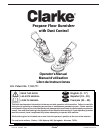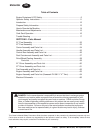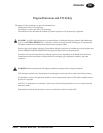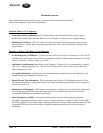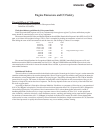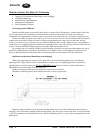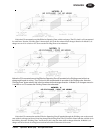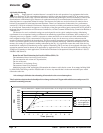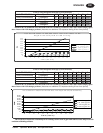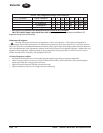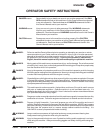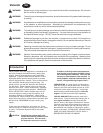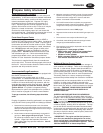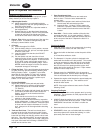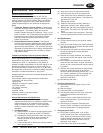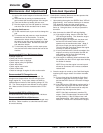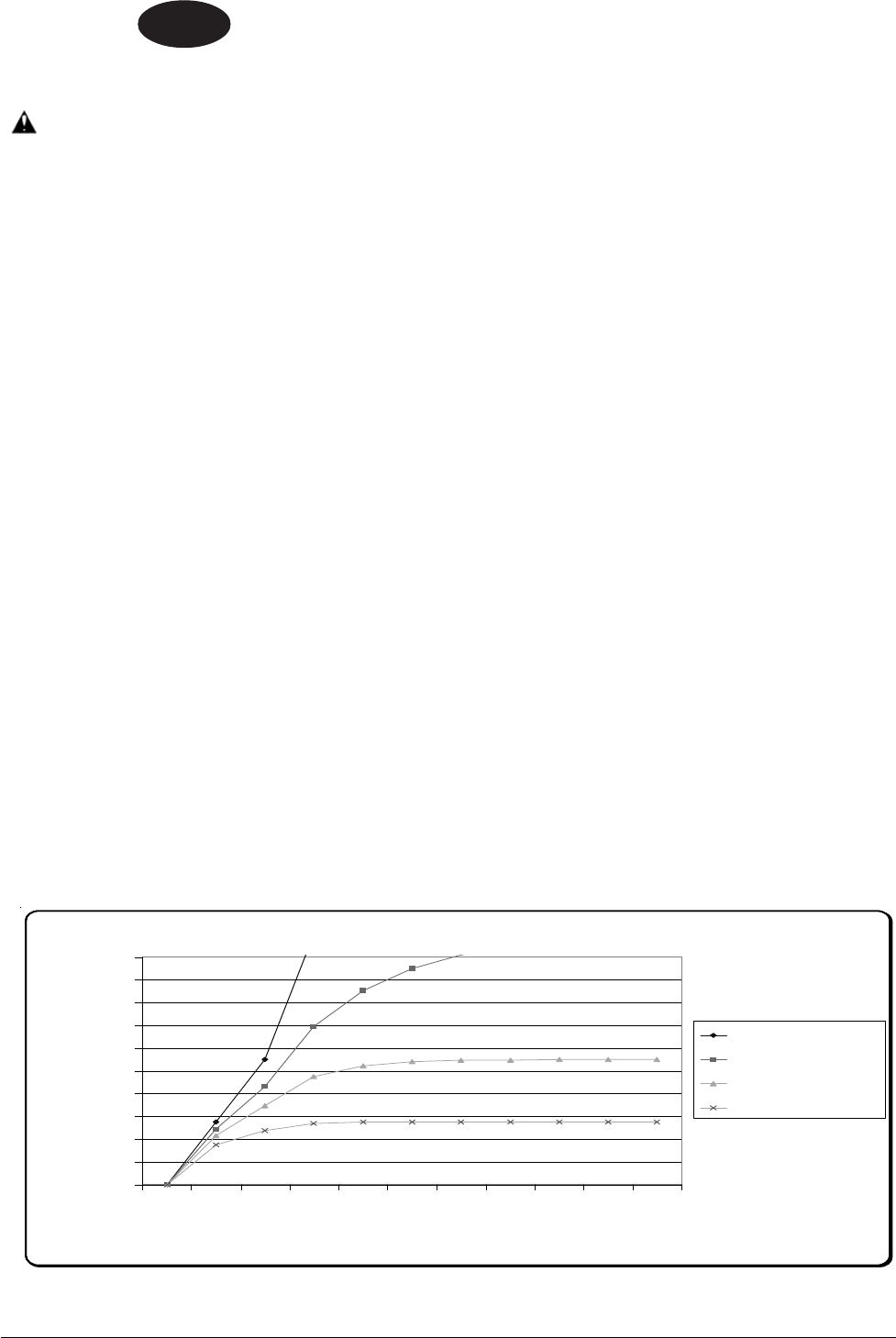
EN
ENGLISH
Page -8-
Clarke
®
Operator's Manual (EN) - DC Propane Burnisher
Air Quality Monitoring
Warning: Deployment of a monitor/detector is essential for the safe operation of any equipment that has the
potential to produce CO. CO sensors/detectors became available on the mass market around 1978. At present several
brands sell in the fifty-dollar range. The main differences between the technologies involved are battery or electric and
Semiconductor or Biomimetic types. Detectors for carbon monoxide (CO) are manufactured and marketed for use in
either the home or occupational industrial settings. The detectors for home use are devices that will sound an alarm
before CO concentrations in the home become hazardous. There is an Underwriters Laboratories, Inc., performance
standard (UL 2034) for residential CO detectors. Detectors currently available on the market are battery-powered, plug-
in, or hard-wired. Some models incorporate a visual display of the parts per million (ppm) concentration of CO present in
the home. For more information on CO detectors for home use, call the Consumer Product Safety Commission Hotline at
1-800-638-2772.
CO detectors for use in residential settings are not designed for use in typical workplace settings. Monitoring
requirements in an occupational setting are different from monitoring requirements in the home. In the workplace, it is
frequently necessary to monitor a worker’s exposure to carbon monoxide over an entire work shift and determine the
time-weighted average (TWA) concentration of the exposure. It may also be necessary to have carbon monoxide
monitors with alarm capabilities in the workplace. The direct-reading instruments are frequently equipped with audio
and/or visual alarms and may be used for area and/or personal exposure monitoring. Some have microprocessors and
memory for storing CO concentration readings taken during the day. It is significant to note that some of the devices
mentioned for workplace CO monitoring are not capable of monitoring TWAs, and not all are equipped with alarms. The
appropriate monitor must be chosen on an application-by-application basis. For more information on the availability of
workplace CO monitors or their application, call the National Institute for Occupational Safety and Health at 1-800-35-
NIOSH (1-800-356-4674).
Room Size and Time Estimations for Parts Per Million (PPM) CO
The fundamental factors in area CO levels involve:
The concentration and volume of CO production;
The size of the area;
The amount of *air exchange if any;
The amount of time CO is produced.
Multiplying length, width, and height will determine the volume or cubic feet in a room. So an empty building 100ft
by 100ft with a 10ft ceiling would be 100,000 cubic ft. in size. Any material that is in the room and takes space would
reduce the cubic feet.
*Air exchange is defined as the exhausting of internal air to the external atmosphere.
The Graph above depicts the relationships of air exchange to time and CO ppm with cubic feet area and percent CO
emissions remaining constant.
1.5% CO Emission in 100,000 cubic feet with 480cc 14 HP Engine and complete air/CO mixing
0
50
100
150
200
250
300
350
400
450
500
0.5123456789
Time (hours)
PPM
0.0 change/hr
1/2 change/hr
1 changes/hr
2 changes/hr



